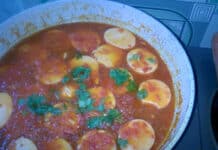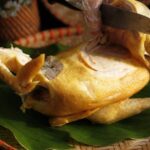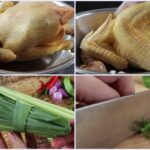Many people struggle with the issue of cracked chicken skin and undercooked meat when boiling chicken. This can make the dish less appealing and unappetizing.
Mistakes that Cause Cracked Skin and Red Bones when Boiling Chicken
Most people tend to plunge the chicken into boiling water from the start. This causes the skin to contract suddenly, leading to cracking, while the meat and bones inside remain raw. As a result, the chicken may look good on the outside, but when cut open, it reveals red or raw spots.
On the other hand, some people put the chicken in cold water and only start timing once the water reaches a boil. This method can also lead to cracked skin due to the prolonged cooking time, and it may cause the meat to become bland and lose its natural sweetness.
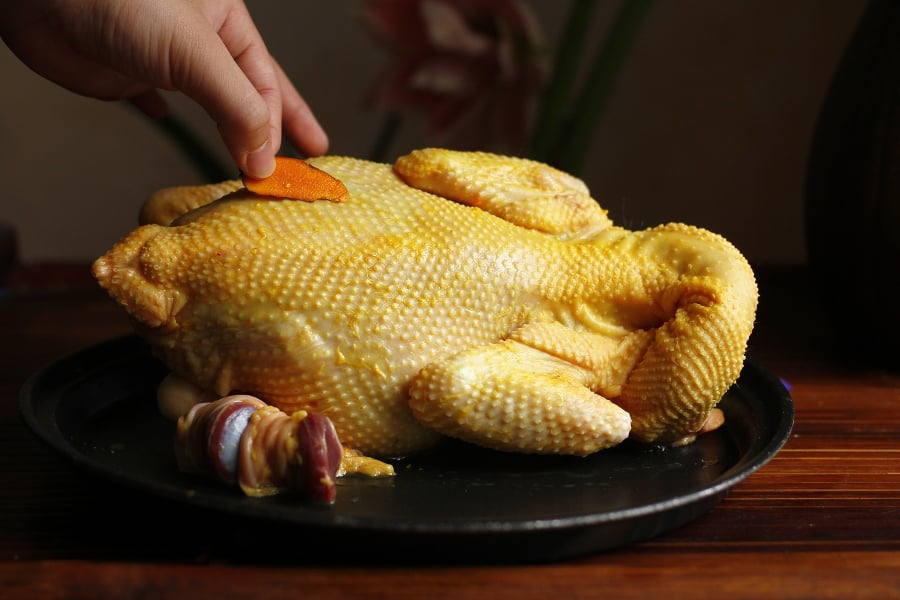
The Right Way to Boil Chicken – Golden Skin and Perfectly Cooked Meat
According to chefs, the secret lies in the water temperature and boiling time.
Step 1: Preparation
- Choose a free-range chicken with firm meat and naturally yellow skin.
- Clean the chicken thoroughly and let it dry. You can rub it with salt or ginger to eliminate any unpleasant odors.
- Prepare some crushed ginger and grilled shallots to add to the boiling pot for extra flavor.
Step 2: Properly Place the Chicken in the Pot
- Heat a pot of water to a warm temperature of 70–80°C (not cold or boiling hot).
- Gently place the chicken in the pot, ensuring that the water covers the chicken. By using warm water, you avoid shocking the skin, reducing the chances of cracking, while the meat cooks evenly from the outside in.
Step 3: Boil and Reduce Heat
- As soon as the water starts to boil, turn down the heat to maintain a gentle simmer.
- Average boiling time:
- For a 1.2–1.5 kg chicken: approximately 25–30 minutes.
- For larger chickens: 35–40 minutes.
- During the boiling process, you can ladle the boiling water over the chicken to keep the skin taut and glossy, preventing discoloration.
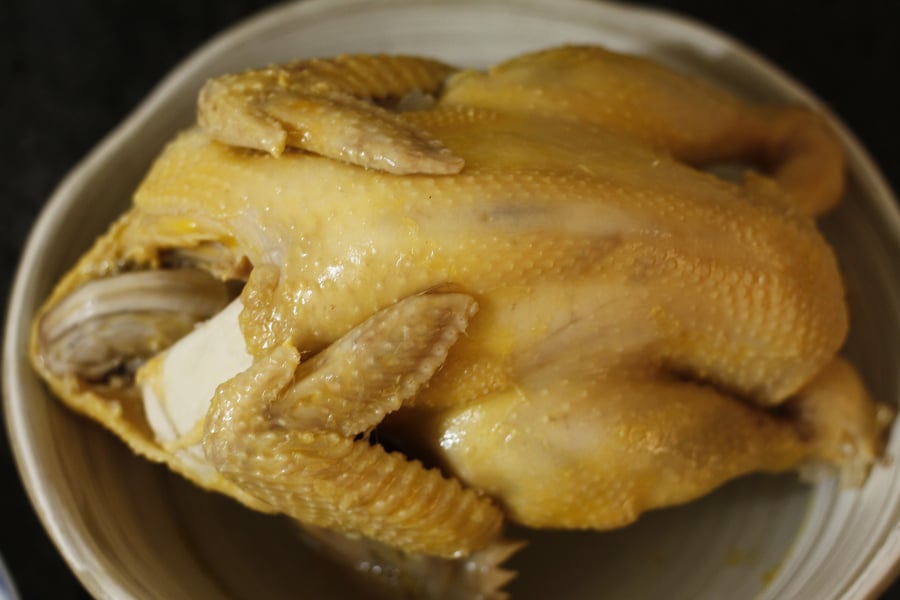
Step 4: Check for Doneness
- Use a wooden skewer or chopstick to pierce the thickest part of the chicken thigh. If the juices run clear, without any pink or red, the chicken is cooked.
- Remove the chicken from the pot and immediately immerse it in a basin of cold water with a few ice cubes for 5–7 minutes. This helps tighten and even out the skin color, preventing it from darkening.
Tips for Golden, Tasty Chicken
- Add a pinch of turmeric or young lemon leaves to the boiling water for a natural golden hue.
- When carving the chicken, allow it to cool completely. This ensures the meat remains firm and doesn’t fall apart.
- Don’t discard the chicken broth! Use it as a base for delicious congee or noodle soup.
By paying attention to the water temperature and following the simple steps outlined above, you can avoid the common issues of cracked skin and undercooked meat. Remember the key points: warm water for placing the chicken, boil then reduce heat, and you’ll end up with a beautifully golden, tender, and perfectly cooked chicken every time. This is the secret used by professional chefs, ensuring you can confidently serve a delicious and visually appealing dish on any special occasion.
“The Ultimate Guide to Perfectly Boiled Chicken: Achieve Tender and Flavorful Results Every Time”
The key to a delicious boiled chicken lies in its appearance and taste. The skin should gleam with a golden hue, and the meat should be evenly cooked, retaining its natural sweetness and tenderness. It is imperative that the bone remains free from any hint of redness or fishiness. However, many home cooks make the common mistake of immersing the chicken in cold water, resulting in an unpleasant odor, bland taste, and uneven cooking.
The Ultimate Guide to a Perfectly Golden Chicken: A Leafy Hack.
In the realm of traditional Vietnamese cuisine, every dish is a precious remedy, and each ingredient is combined with purpose. The humble boiled chicken, a staple in many households, is always accompanied by lime leaves, creating a harmonious blend of flavors that not only delights the taste buds but also offers a plethora of health benefits.















